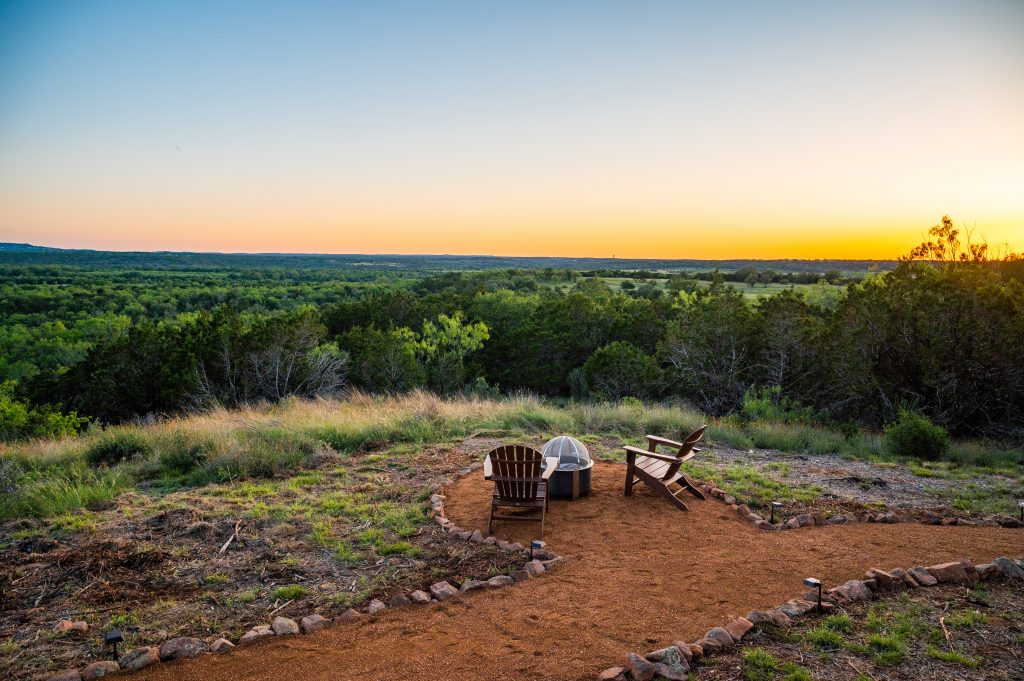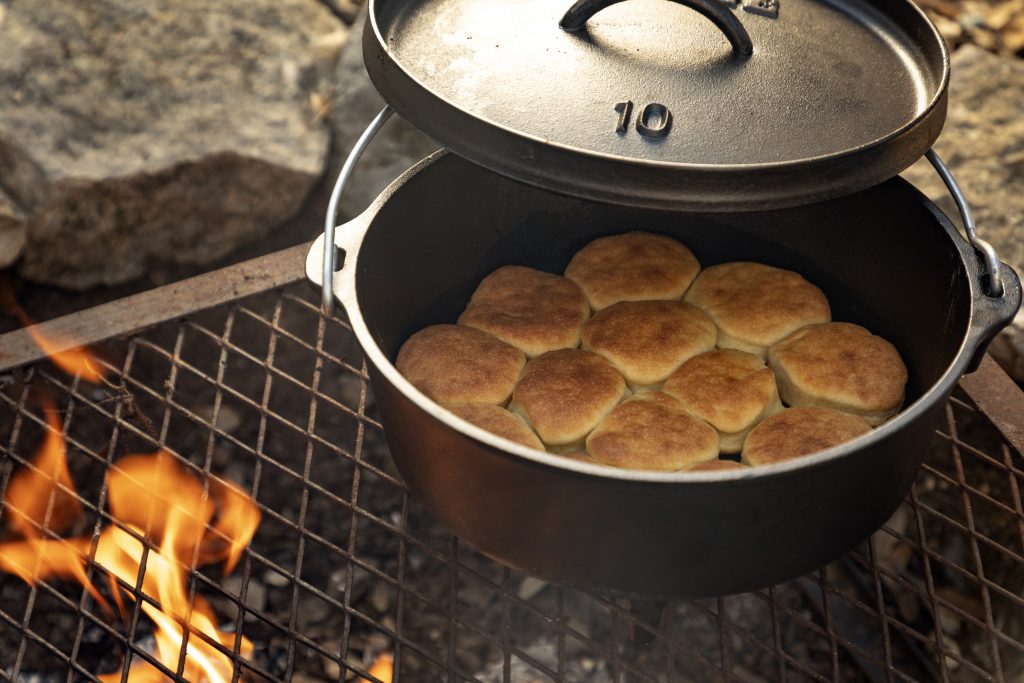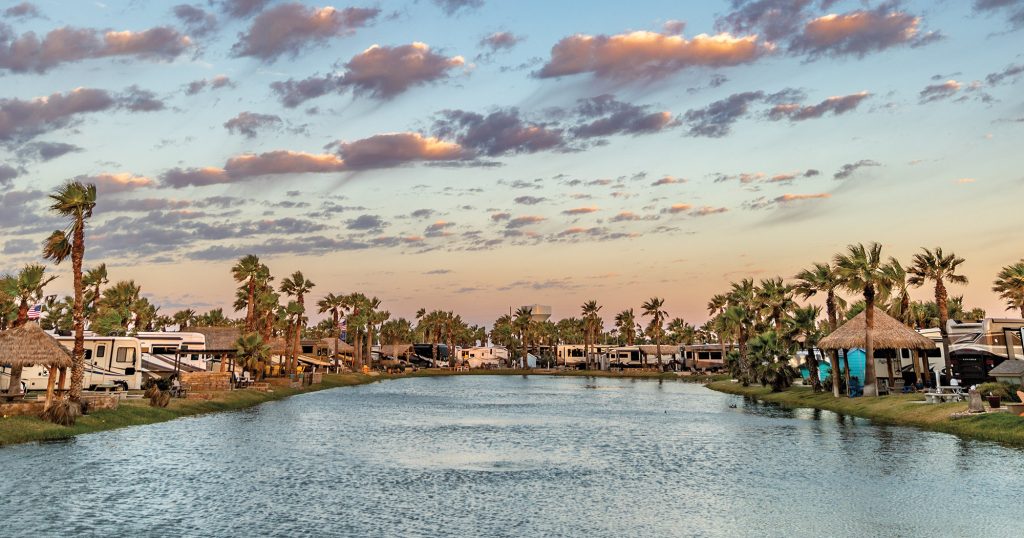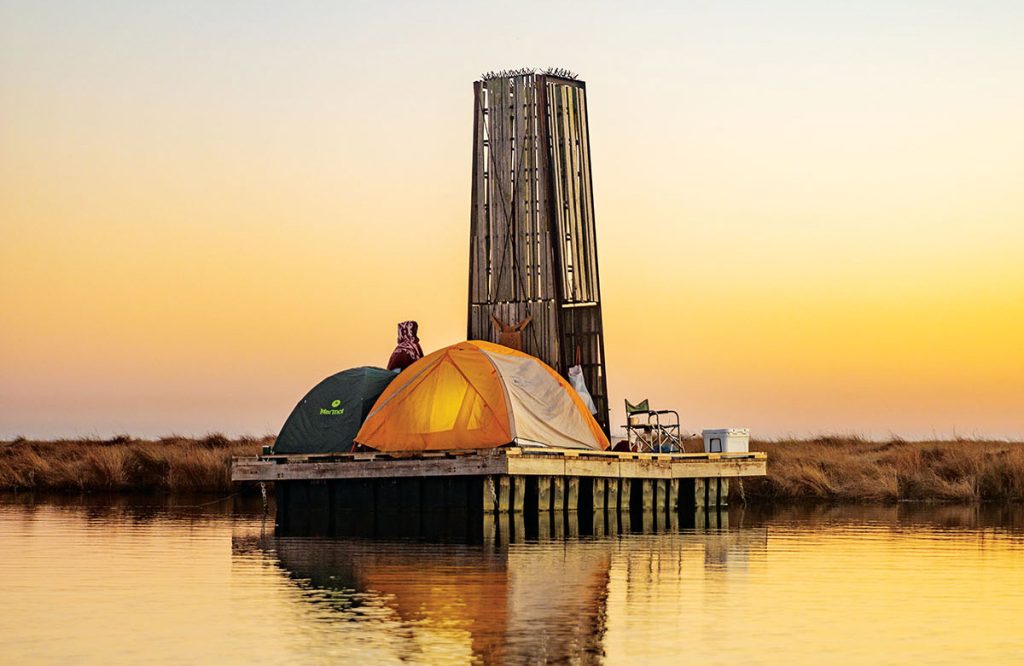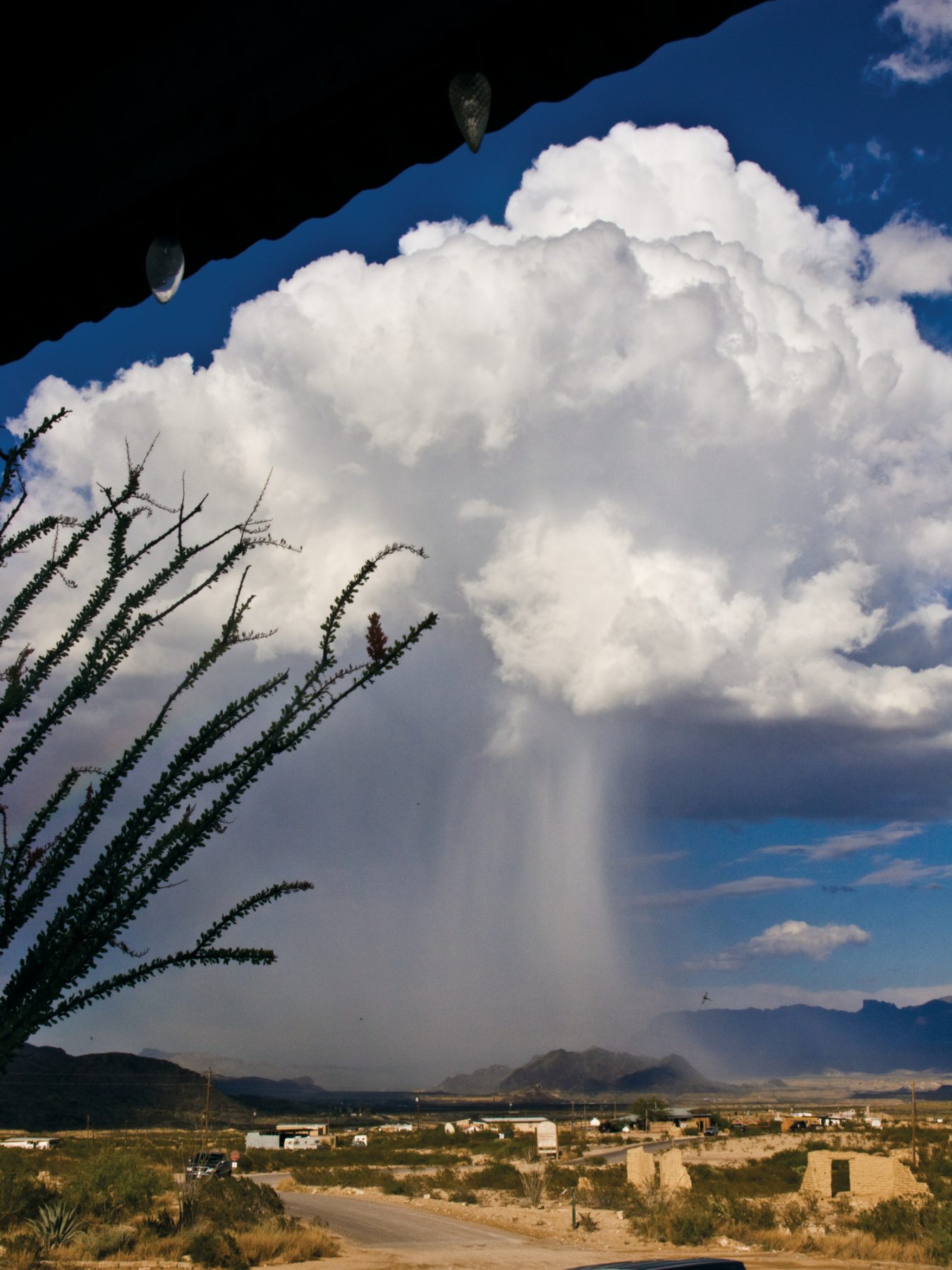
Storm clouds and a rain shower over Terlingua in West Texas. Photo by J. Griffis Smith
We humans love to talk endlessly about the weather, and when it comes to icebreakers, it doesn’t matter whether you’re facing heat, cold, rain, or snow. But on a camping trip, actions speak louder than words when making sure that everybody in your party stays both safe and comfortable. After all, Texas throws all kinds of extremes at campers—from searing summer days to sudden downpours to the freezing winds of a blue norther.
“We like to say that it’s the moment when the weather hands you the greatest challenges that make the best stories,” says Lisa Reznicek, a Texas Parks and Wildlife Department outdoor recreation specialist who teaches camping to families in Houston.
Furthermore, Reznicek says, anybody who gets hooked on the camping bug will eventually run into less-than-optimal conditions. But with planning and the right gear, she says, there’s no reason lousy weather should discourage a night in nature.
With reasonable care and proper battening, most tents can withstand wind and rain, or even snow, while a change of dry clothes and warm socks can make a world of difference if somebody does get wet. She recommends a sleeping pad or cot to provide for insulation and to keep your body off the ground, especially on chilly nights.
The best preparation, she adds, is simply double-checking the weather where you are going. Weather Underground is a reliable website, with animated radar maps. For mobile apps, she counts on Weather Bug, especially for thunderstorms.
“We don’t want to scare people,” Reznicek says. “Rain usually isn’t too big a deal, but thunder and lightning can be more serious. Especially around water.” Sticking to the edge of the woods is better than camping in the wide open, where you or your tent could be a target for lightening, but stay away from single trees. On river trips or in the desert, seek sites that are free of flooding risk.
When car camping, she adds, your vehicle can be safe backup in a storm. Stringing up a tarp can provide a secondary refuge for cooking and other activities.
Sean Bibby, community outreach coordinator with the Texas-based retailer Whole Earth Provision Co., recalls a time hail and rain trapped him on the South Rim of the Chisos Mountain in Big Bend National Park. The storm blew for three days, and all Bibby had to read was the ingredients on an energy bar wrapper. Now he makes a point to bring along a book or playing cards.
Nobody likes to be cold and damp, he notes, but in late fall and winter it can be downright dangerous to face freezing, wet weather. Quick-drying synthetic fabrics are better than cotton, he says, and layering and a wooly cap can ward off cold. If you do get wet, dry off before climbing into your sleeping bag or hammock.
